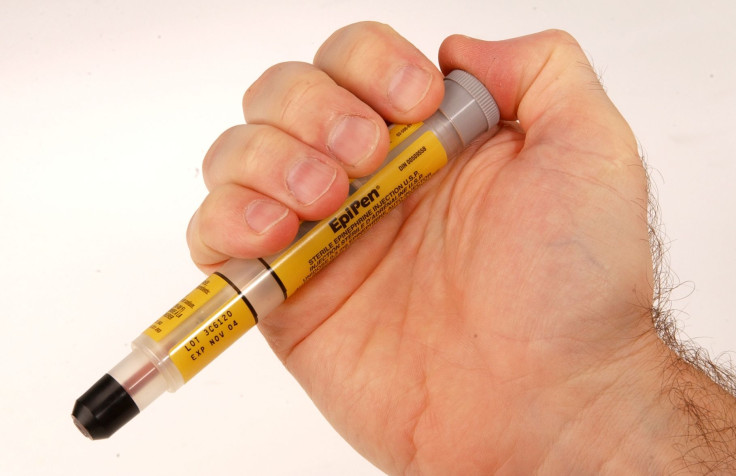EpiPen Price Hike Update: Mylan Lowers The Cost For Life-Saving Allergy Medication After Widespread Criticism

Millions of Americans rely on epinephrine to save them when severe allergies strike, and a recent price hike by the Mylan pharmaceutical company worried — and angered — the many patients at the mercy of the cost of EpiPens. Democratic nominee Hillary Clinton joined those criticizing the drug’s price jump, and Mylan has now reduced the patient cost of EpiPens through a savings card that would cover up to $300 on a 2-pak.
"That's outrageous — and it's just the latest troubling example of a company taking advantage of its consumers," Clinton said in a statement. "It's wrong when drug companies put profits ahead of patients, raising prices without justifying the value behind them."
After the company’s only competitor, Sanofi, enacted a voluntary recall after possible dosage errors, Mylan became a virtual monopoly as the only supplier for EpiPens. In 2011, EpiPens cost users roughly $165 for a one-time supply. Today, users must pay $608 for their life-saving medication — a nearly 400 percent increase in just five years.
Mylan acquired the Auto-Injector in 2007, making usage easier and more effective. The injector automatically calibrates and delivers the epinephrine dose for the person in need. But each EpiPen comes with a one-year expiration date, increasing the risk for people who can’t cover the out-of-pocket expenses not covered by their insurance. Because epinephrine itself is very inexpensive, emergency medical technicians have resorted to filling syringes with the medication to lower costs, avoiding the use of Mylan’s expensive injector.
For the roughly 43 million people who are at risk for anaphylaxis, not receiving the necessary epinephrine dosage can put them at severe and immediate risk, often leading to hospitalization. According to the American Academy of Allergy Asthma & Immunology, anaphylactic shock overcomes a person quickly, typically causing wheezing, difficulty breathing, throat tightness, low pulse, hives, rash, nausea, and loss of consciousness.
© Copyright IBTimes 2024. All rights reserved.











